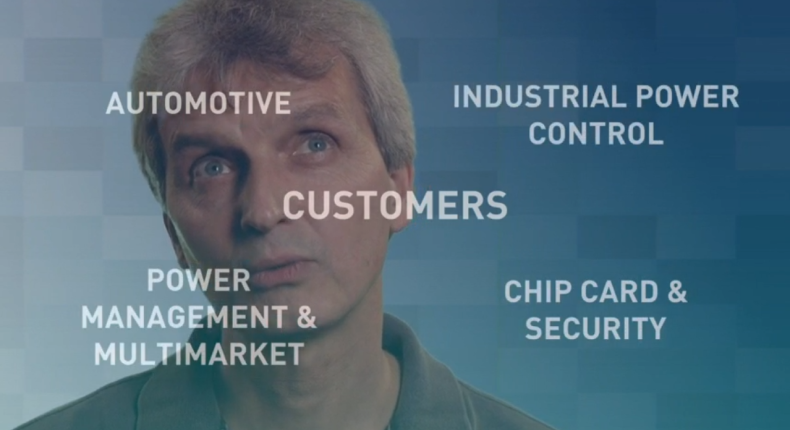Infineon Technologies, one of the 10th largest semiconductor manufacturers worldwide, has deployed our SmartFactory Advanced Productivity Family (APF) to enable automated decision making and optimize existing automation solutions. Because Infineon was relying on Excel to make assembly and test decisions manually, they needed a shoulder-to-shoulder automation solution where man and robot worked in parallel. Additionally, they wanted to reduce the effort it took to use real-time data from systems with different levels of data quality and high complexity.
Watch the video to see how they used APF for scheduling to achieve a 5 to 15% capacity improvement across multiple work centers at their front-end sites, and to support fully automated decision making at their back-end sites.
Transcript
Infinite Technologies has 35,000 employees. It’s running 19 production facilities and 34 research and development locations around the world. Our business environment is not really different from that of any other semiconductor company and our competitors.
In order to stay in business, we need a certain percentage productivity increase every year for our 6, 8 and 12 inch factories. Infineon transitions from the classical semiconductor production flow, which is running a fab, you test, you have an assembly and the final test, to more and more complex production networks across multiple sites, including subcons. Also, we are faced with an increasing product mix.
So, this is adding to complexity significantly. So, we are producing more different things at the same time. Obviously, we need to reduce manual planning effort and we need to provide more accurate delivery forecasts and early warnings.
And last but not least, there is a huge pressure to standardize and harmonize IT and automation solutions for existing factories. The key requirement is really, you have to get to automated decisions and you have to optimize existing automation concepts and solutions, which have been developed in the past years. Let me give you some examples.
In assembly and test, there are lots of manual decisions. To plan setup corridors, lot starts or to do forecasts for the supply chain. Some of them are still based on Excel. Another example is coming from the front-end manufacturing sites.
We have to go for full automation in parallel to manual processes. So, we call it the shoulder-to-shoulder situation, where man and, well, the operator in the factory and the robot have to work in parallel. And factories have a very different degree of automation.
So, we have already pretty highly automated factories, but we also have on the other side factories, which just started the automation projects. For all this, we must reduce the effort to integrate real-time data coming from different systems, having various levels of data quality. Many of these systems are site-specific, have been implemented over many years and the complexity is really huge.
So, the market requires improved, optimized and real-time feedback into the supply chain. APF stands for the Applied Materials Product Advanced Productivity Family and is really a great tool when it comes to integrating with real-time data sources, when it comes down to integrating with many, many different data sources. Out of the APF suite, we are using the dispatching component, which is the Real-Time Dispatcher, RTD.
We also use the reporting capabilities and we use Activity Manager. And as no real programming experience is required to build those APF rules, IT can shift automation, reporting and diagnostic responsibilities back to business users in line control or in automation groups and in industrial engineering. And you can imagine just by pushing back the responsibility of the people who actually came up with the requirements and who understand their business better than IT, you speed up projects significantly.
And at the end of the day, you have very short learning cycles and a good strategy for rapid prototyping. In front-end sites, we are using APF and a commercial solver to implement scheduling. Results exceeded our expectations.
We saw a 5-15% capacity improvement across multiple work centers. Those work centers were furnaces, wet benches, Azure, Sputter tools and also lithography. In back-end sites, we started to use APF and that commercial solver to support full automated decision-making for lot starts, equipment setup planning and lot sequencing.
A very important thing we achieved is now that the end-users can validate data, they can check for data consistency and sanity checks, etc., which also speeds up our project significantly. Within 18 months, we rolled out RTD to three different sites with very heterogeneous data sources and site-specific business processes in order to support the ongoing large and ambitious automation projects. In terms of IT, RTD or APF is very important as a building block, as a baseline.
It helps to harmonize and to standardize solutions and it really has become a building block for all the automation projects, the running ones as well as the ambitious upcoming ones.

